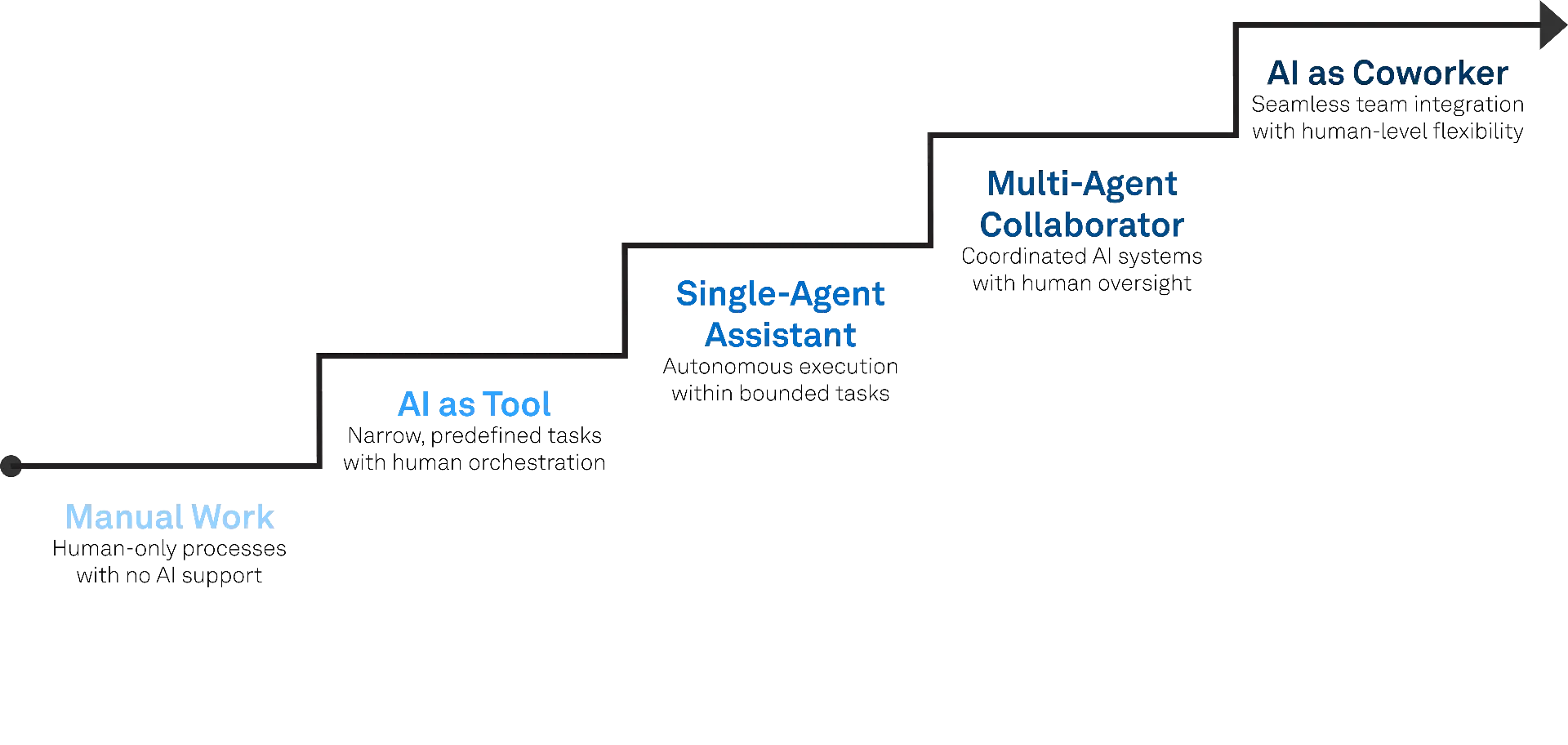
Agentic AI in Life Sciences
From Assistant Tool to Process Intelligence
How AI agents will transform life sciences processes in the future – and the key questions companies should be asking today.
Agentic AI is the buzzword of the moment – and rightly so. AI agents promise entirely new productivity potential: they enable not only the execution of individual tasks but also the autonomous orchestration of complex workflows across the life sciences value chain. However, to realize a true end-to-end execution model, companies must first develop a comprehensive understanding of their processes – in terms of business, technology, and regulatory aspects.
Just over three years have passed since the first version of ChatGPT was released, ushering in a new chapter of AI-supported business processes. Since then, impressive use cases have emerged across various industries, delivering efficiency gains in individual process steps, improved decision-making, and employee relief. Still, it must be noted: Most current AI solutions are limited to isolated tasks. They reach their limits when faced with complex, multi-stage processes.
This is where Agentic AI comes into play: Unlike traditional AI solutions, agent-based systems can not only analyze or generate but also act autonomously, think, plan, and adapt to their environment. They stand out through their ability to make independent decisions, pursue specific goals, and interact dynamically with both digital systems and human colleagues.
This results in a completely new model of intelligent process control – where AI supports not just individual tasks but entire value creation processes across system boundaries. Agentic AI thus marks a new development stage on the journey from pure task automation to collaborative intelligence.

From Task Automation to Collaborative Intelligence | © msg industry advisors ag
Agentic AI in GxP Processes – From Theory to Validated Practice
Applied to the life sciences industry, this could look like the following: While traditional AI can analyze a deviation report in the LIMS, an agent-based system handles the entire follow-up process. It classifies the deviation according to SOP, creates an auditable report, and schedules a QA review – all within minutes, traceable and under human supervision.
To achieve this, an agent system breaks the workflow down into tasks and subtasks, which a manager sub-agent assigns to other specialized sub-agents. These specialized sub-agents draw on experience, expertise, and organizational data. They coordinate and execute the tasks. The division of labor remains clear: The LLM ("Thinking") interprets the prompt, plans the process, and decides which tools to use. The actual execution takes place in validated systems such as MES or LIMS ("Doing"), in compliance with all GxP requirements – including audit trails, access control, and approval processes.
This ability to process information across systems, target validated systems, and independently perform tasks makes AI agent systems a catalyst for processes where previous automation solutions failed due to system boundaries and media discontinuities.
Process understanding as the foundation for agentic systems
The transformation towards Agentic AI is not just a technological issue. It also touches business, regulatory, and ethical questions along the entire value chain. The foundation is a deep understanding of processes:
Only with a clear understanding of their end-to-end processes can companies build viable agent architectures. This includes system boundaries, roles, data flows, and regulatory requirements. These are the prerequisites for integrating agentic systems meaningfully and safely into existing validation and quality assurance processes.

Agentic AI End-to-End Cycle | © msg industry advisors ag
Especially in GxP environments, the principle applies: Agent architectures must be designed based on processes – not technology. This is the only way to avoid risks and ensure compliance.
Three aspects companies should clarify before deployment
The ability of agentic systems to independently prepare decisions and implement tasks across systems introduces new responsibilities, requirements, and risks. Companies should address the following aspects early on:
- Human-AI Operating Model
The introduction of Agentic AI requires clear rules for the interaction between humans and machines. Who makes which decisions? Where does responsibility lie? What tasks can agents perform independently – and when is human intervention required? A formalized Human-AI Operating Model defines decision boundaries, transparency obligations, and escalation protocols. It builds trust, fosters acceptance, and is a prerequisite for regulatory viability.
- Compliance by Design
Unlike traditional IT systems, agentic systems evolve through use. This dynamic contradicts established validation paradigms in GxP environments. Therefore, compliance requirements must be integrated into the system architecture from the outset. A multilayered model of validation, security, and control mechanisms ensures that dynamic agents remain compliant.
- Implementation Roadmap
Successfully introducing Agentic AI requires a clear roadmap: First, data sources must be standardized and integrated. Then guardrails – technical, organizational, and regulatory safeguards – must be built. Only then should pilot processes with clearly defined roles and control points be implemented. Skipping these steps risks uncontrollable systems and a lack of trust. A disciplined approach is essential for scalability and long-term success.
Conclusion: Establish the foundation for agentic systems now
Agentic AI is the next evolutionary stage of AI-supported automation – with the potential to make processes in the life sciences industry smarter, faster, and more robust from a regulatory perspective. Even though the broad implementation of complex multi-agent systems is still in its early stages, it is worth laying the strategic groundwork now: through in-depth process understanding, targeted competency development, and the creation of viable Human-AI models.
The more AI is integrated into validation-relevant processes, the more important a conscious, regulated approach becomes – fostering real collaboration between humans and machines. Agentic AI is a key step on this journey.
Authors
Would you like to learn more about this topic or discuss individual challenges?
Our contacts are available for a personal consultation.


